Peugeot Traveller vs Porsche Taycan – Differences & prices compared
Compare performance, boot space, consumption and price in one view.
Find out now: which car is the better choice for you – Peugeot Traveller or Porsche Taycan?
The Peugeot Traveller (Bus) comes with a Diesel or Electric engine and Automatic transmission. In comparison, the Porsche Taycan (Coupe) features a Electric engine with Automatic transmission.
When it comes to boot capacity, the Peugeot Traveller offers 2011 L, while the Porsche Taycan provides 407 L – depending on how much space you need. If you’re looking for more power, decide whether the 177 HP of the Peugeot Traveller or the 1034 HP of the Porsche Taycan suits your needs better.
In terms of consumption, the values are 24.30 kWh7.30 L per 100 km for the Peugeot Traveller, and 16.70 kWh for the Porsche Taycan.
Price-wise, the Peugeot Traveller starts at 33100 £, while the Porsche Taycan is available from 87900 £. Compare all the details and find out which model fits your lifestyle best!
Peugeot Traveller
The Traveller captivates with its refined blend of comfort and versatility, making it an ideal choice for both family adventures and professional needs. Its spacious interior accommodates a remarkable range of passenger and cargo configurations, ensuring flexibility for any journey. With an emphasis on safety and modern features, the Traveller delivers a remarkable driving experience that caters to diverse lifestyles.
details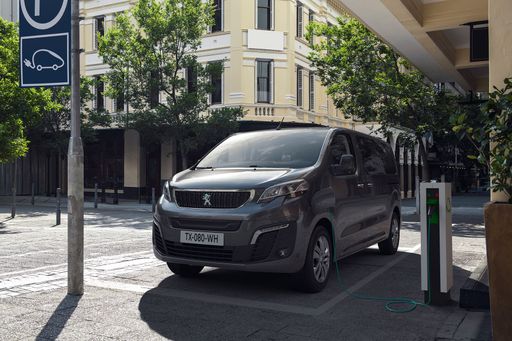 @ media.stellantis.com
@ media.stellantis.com
 @ media.stellantis.com
@ media.stellantis.com
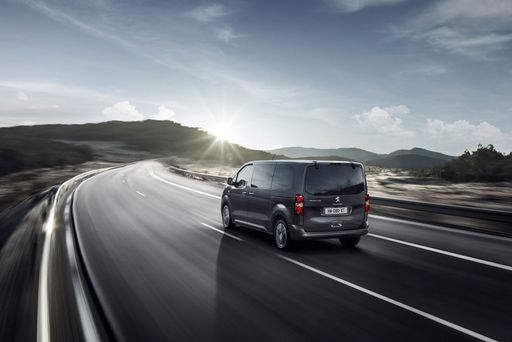 @ media.stellantis.com
@ media.stellantis.com
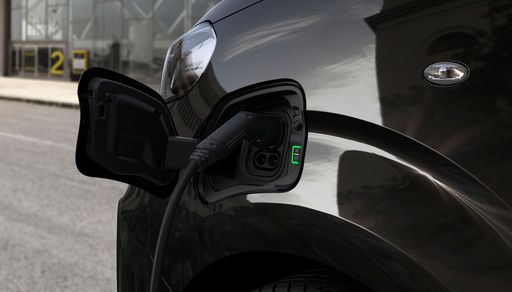 @ media.stellantis.com
@ media.stellantis.com
Porsche Taycan
The Porsche Taycan redefines the electric vehicle landscape with its stunning design and thrilling performance. With its smooth lines and athletic stance, this four-door sports car captures attention while delivering an exhilarating driving experience. Inside, the Taycan boasts a luxurious and high-tech interior, seamlessly blending comfort and cutting-edge innovation.
details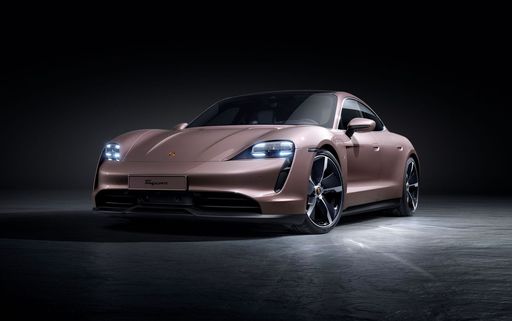 @ Porsche
@ Porsche
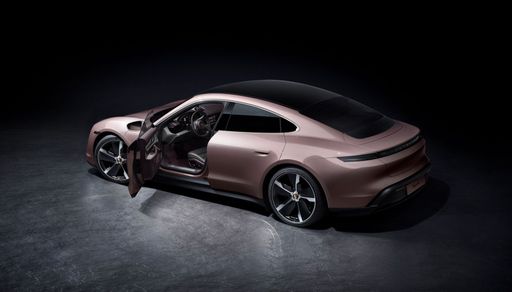 @ Porsche
@ Porsche
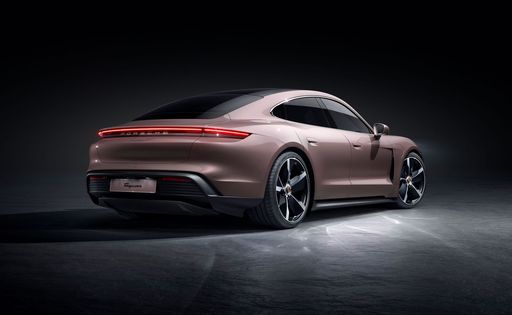 @ Porsche
@ Porsche
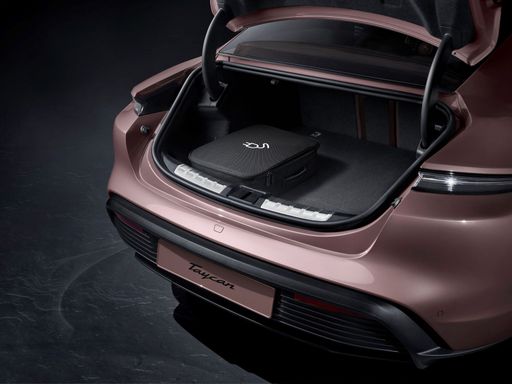 @ Porsche
@ Porsche
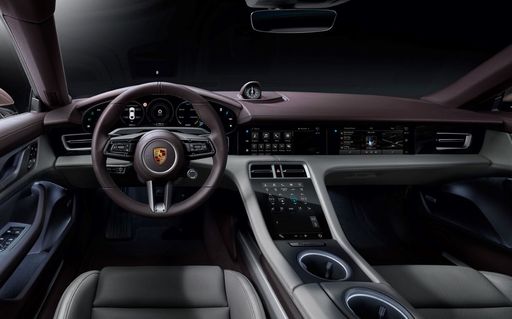 @ Porsche
@ Porsche

|

|
|
|
|
Costs and Consumption |
|
|---|---|
|
Price
33100 - 52100 £
|
Price
87900 - 206700 £
|
|
Consumption L/100km
7.3 - 7.4 L
|
Consumption L/100km
-
|
|
Consumption kWh/100km
24.3 - 25 kWh
|
Consumption kWh/100km
16.7 - 20.7 kWh
|
|
Electric Range
217 - 351 km
|
Electric Range
552 - 680 km
|
|
Battery Capacity
-
|
Battery Capacity
82.3 - 97 kWh
|
|
co2
0 - 194 g/km
|
co2
0 g/km
|
|
Fuel tank capacity
70 L
|
Fuel tank capacity
-
|
Dimensions and Body |
|
|---|---|
|
Body Type
Bus
|
Body Type
Coupe
|
|
Seats
8
|
Seats
4
|
|
Doors
5
|
Doors
4
|
|
Curb weight
1953 - 2240 kg
|
Curb weight
2165 - 2370 kg
|
|
Trunk capacity
1624 - 2011 L
|
Trunk capacity
326 - 407 L
|
|
Length
4983 - 5333 mm
|
Length
4962 - 4968 mm
|
|
Width
1920 mm
|
Width
1966 - 1998 mm
|
|
Height
1890 mm
|
Height
1378 - 1381 mm
|
|
Payload
850 - 914 kg
|
Payload
175 - 635 kg
|
Engine and Performance |
|
|---|---|
|
Engine Type
Diesel, Electric
|
Engine Type
Electric
|
|
Transmission
Automatic
|
Transmission
Automatic
|
|
Transmission Detail
Automatikgetriebe
|
Transmission Detail
-
|
|
Drive Type
Front-Wheel Drive
|
Drive Type
Rear-Wheel Drive, All-Wheel Drive
|
|
Power HP
136 - 177 HP
|
Power HP
408 - 1034 HP
|
|
Acceleration 0-100km/h
10.6 - 14.2 s
|
Acceleration 0-100km/h
2.2 - 4.8 s
|
|
Max Speed
130 - 185 km/h
|
Max Speed
230 - 305 km/h
|
|
Torque
270 - 400 Nm
|
Torque
410 - 1340 Nm
|
|
Number of Cylinders
4
|
Number of Cylinders
-
|
|
Power kW
100 - 130 kW
|
Power kW
300 - 760 kW
|
|
Engine capacity
1997 cm3
|
Engine capacity
-
|
General |
|
|---|---|
|
Model Year
2024
|
Model Year
2024 - 2025
|
|
CO2 Efficiency Class
G, A
|
CO2 Efficiency Class
A
|
|
Brand
Peugeot
|
Brand
Porsche
|
Peugeot Traveller
A New Dimension of Travel: Discover the Peugeot Traveller
The Peugeot Traveller is more than just a vehicle; it's a testament to versatility, modern engineering, and elegance tailored for both urban and long-distance journeys. Known for its spacious interior and innovative technology, the Traveller caters to families and businesses alike. In this article, we explore the technical aspects and innovative features that make the Peugeot Traveller a standout choice in today's automotive landscape.
Versatile Engine Options: Power Meets Efficiency
The Peugeot Traveller lineup offers a variety of engine options to match any lifestyle. For those with a preference for traditional engines, the Traveller L2 and L3 models boast a potent 177 HP Diesel engine. These models come equipped with an automatic front-wheel-drive system, offering smooth handling and driving pleasure. With fuel efficiency standards set at approximately 7.3 to 7.5 liters per 100 kilometers, these diesel variants deliver both power and savings at the pump.
The Electric Revolution: e-Traveller Experience
As the world shifts towards greener transportation, the Peugeot e-Traveller emerges as a leader in the electric vehicle segment. Available in L2 and L3 variants, the e-Traveller offers an electric driving experience with a 136 HP motor, meeting the needs of eco-conscious drivers. With battery capacity options of 50 kWh and 75 kWh, the e-Traveller can cover impressive distances ranging from 217 km to a remarkable 351 km on a single charge. This makes it an ideal companion for both city commutes and longer excursions.
Spaciousness Redefined: Comfort and Convenience
One of the Traveller's fundamental attributes is its spacious and flexible interior. With seating for up to eight passengers, it offers ample room for family, friends, or colleagues. The Traveller's trunk capacity varies between 1624 and 2011 liters, ensuring that no luggage needs to be left behind. Each model is designed with comfort and convenience in mind, making every journey enjoyable.
Innovative Features: Safety and Technology
Peugeot Traveller models are equipped with advanced safety features and user-friendly technology. From automatic gearboxes to intelligent reduction gearboxes in electric models, each vehicle ensures a seamless driving experience. Additionally, the Traveller boasts a range of technology-driven amenities, including advanced navigation systems, state-of-the-art infotainment, and connectivity options that keep passengers entertained and informed.
Elegant Design: Crafted for Aesthetics
Peugeot has sculpted the Traveller with a keen eye for aesthetics. Measuring between 4983 and 5333 mm in length and featuring a sleek width of 1920 mm, the Traveller effortlessly combines form with function. Its design is further complemented by elegant trim levels such as Active EAT8 and Allure, which enhance the Traveller's charismatic presence on the road.
Conclusion: Whether Diesel or Electric, the Traveller Leads the Way
In conclusion, the Peugeot Traveller is a master class in blending traditional and modern automotive technologies. With its robust diesel options and pioneering electric models, it offers diverse choices for discerning consumers. Regardless of the variant you choose, the Traveller promises an unparalleled combination of power, efficiency, and luxury, setting the bar high in the realm of multi-purpose vehicles. It's not just about reaching your destination; it's about enjoying the journey along the way.
Porsche Taycan
Unveiling the Porsche Taycan: A Leap into the Future
The Porsche Taycan has established itself as a pioneering force in the realm of electric vehicles, merging luxury with performance in a way few others can boast. With stunning aesthetics and groundbreaking technologies, the Taycan stands as a testament to Porsche's commitment to innovation in the automotive world.
Power and Performance: A New Era for Electric Driving
At the heart of the Taycan's allure lies its remarkable performance figures. The model is available in several configurations, with power ranging from 408 HP in the entry-level variant to an astonishing 1,034 HP in the Turbo GT edition. This kind of power translates directly into exhilarating acceleration, with the Taycan Turbo GT achieving 0-100 km/h in just 2.2 seconds. Even the more modestly powered variants offer thrilling performance while managing to retain daily usability.
The Taycan's drive system includes options for both rear-wheel drive and all-wheel drive, providing flexibility based on driver preference. This versatile drivetrain couples impeccably with Porsche's advanced electric motors, ensuring optimal performance under various conditions.
Battery Technology and Range: Where Engineering Meets Efficiency
The Taycan ships with sophisticated battery technology that caters to both performance and practicality, with capacities ranging from 82.3 kWh to 97 kWh. The Performance Battery Plus variant extends the electric range to an impressive 680 km, while even the more potent Turbo and Turbo S models manage to offer about 634 km of range, ensuring that drivers can enjoy spirited drives without the constant worry of recharging.
Moreover, the efficiency of the Taycan is notable, with consumption figures around 16.7 to 20.6 kWh per 100 km. This blend of efficiency and power redefines how one perceives electric mobility.
Charging Innovations: Powering Up Fast
Charging innovations further enhance the Taycan’s appeal. With a maximum charging capacity of 270 kW, the Taycan can achieve an 80% charge in just about 22.5 minutes under optimal conditions. This means less time tethered to a charging station and more time enjoying the open road.
Cutting-edge Technology: A Driver’s Digital Playground
Inside, the Taycan is equipped with cutting-edge technology that ensures both driver engagement and comfort. The dual-screen cockpit integrates a 10.9-inch infotainment display alongside a 10.9-inch passenger display, offering intuitive access to navigation, entertainment, and vehicle settings.
Porsche’s innovative approach extends to advanced driver assistance systems, enhancing safety while maintaining the driving experience characteristic of the brand. Features like adaptive cruise control, lane-keeping assistant, and parking aids seamlessly integrate to assist drivers without compromising the thrill of driving a Porsche.
Design That Turns Heads
The Porsche Taycan is not just about performance and technology; it is also a design statement. With sleek lines, aggressive stance, and the signature Porsche front fascia, the Taycan conveys an unmistakable aura of luxury and sportiness. The aerodynamic profile plays an essential role in its efficiency and performance, showcasing Porsche's devotion to their design ethos.
Conclusion: The Porsche Taycan's Legacy
In conclusion, the Porsche Taycan represents a significant leap forward for electric vehicles, successfully combining performance, range, and technology with the spirit of Porsche. As the automotive industry pivots increasingly towards electrification, the Taycan sets a high bar, promising to deliver excitement, efficiency, and the unmistakable joy of driving. With each model released, Porsche underscores its commitment to redefining performance vehicles for a new generation, making the Taycan not just a car, but a symbol of innovation and luxury in the electric age.
The prices and data displayed are estimates based on German list prices and may vary by country. This information is not legally binding.
